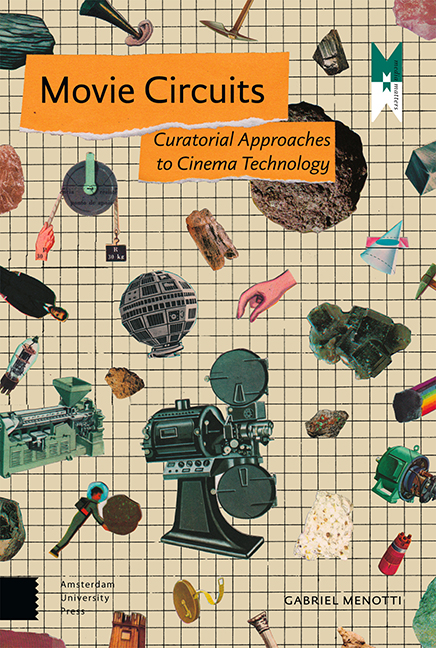3 - Projection Studies
Published online by Cambridge University Press: 21 November 2020
Summary
Abstract
This chapter proposes a practice-based solution to the shortcomings of more traditional screen studies in dealing with the technical genesis of cinema. It acknowledges the material situatedness of research practices and encourages the exercise of their inherent curatorial dimensions. Furthermore, the chapter underscores the advantages of an exhibition over a text as a means to share research results, pointing to the way it rearranges elements within the circuit (even if temporarily). It concludes with a call for researchers to perform critical experiments of media museography as a way to intervene in the becoming of cinema.
Keywords: Practice-led research, curatorial knowledge, ontography, anecdotal evidence, media museography
The negative spaces within the circuit comprise a considerable part of the socio-technical processes relevant to movie circulation. They also constitute an associated milieu that makes room for the continuing individuation of cinema. By accommodating the bulk of technological development, they allow for the preservation of the formal conventions of the medium in spite of its physical transformations. Nevertheless, they remain largely excluded from the concerns of film and screen studies. They constitute an invisible side of cinema precisely because they are blind spots in our conventional ways of understanding the medium.
Similar to other medial frameworks, the body of disciplines traditionally dedicated to the critical analysis of cinema occupies a fixed position within its circuit. The stratification of the medium defines a field of activities for them just as it does for other practices. Research is therefore circumscribed to the boundaries of its own apparatus, shying away from any deeper engagement with the topography of the medium. As such, it not only takes the technical synergies of the circuit for granted, but also contributes to their reinforcement. Most parts of the cinematographic work that it can illuminate are those already under the light.
The digitization of film threw film and screen studies into a crisis not only because it obliterated its object; it also provoked the complete disarrangement of the technical ensemble from which the discipline borrowed its coherence and legitimacy. In doing so, it made the discipline's epistemological deficiencies too apparent. However, that moment of vulnerability did not last.
- Type
- Chapter
- Information
- Movie CircuitsCuratorial Approaches to Cinema Technology, pp. 87 - 108Publisher: Amsterdam University PressPrint publication year: 2019



